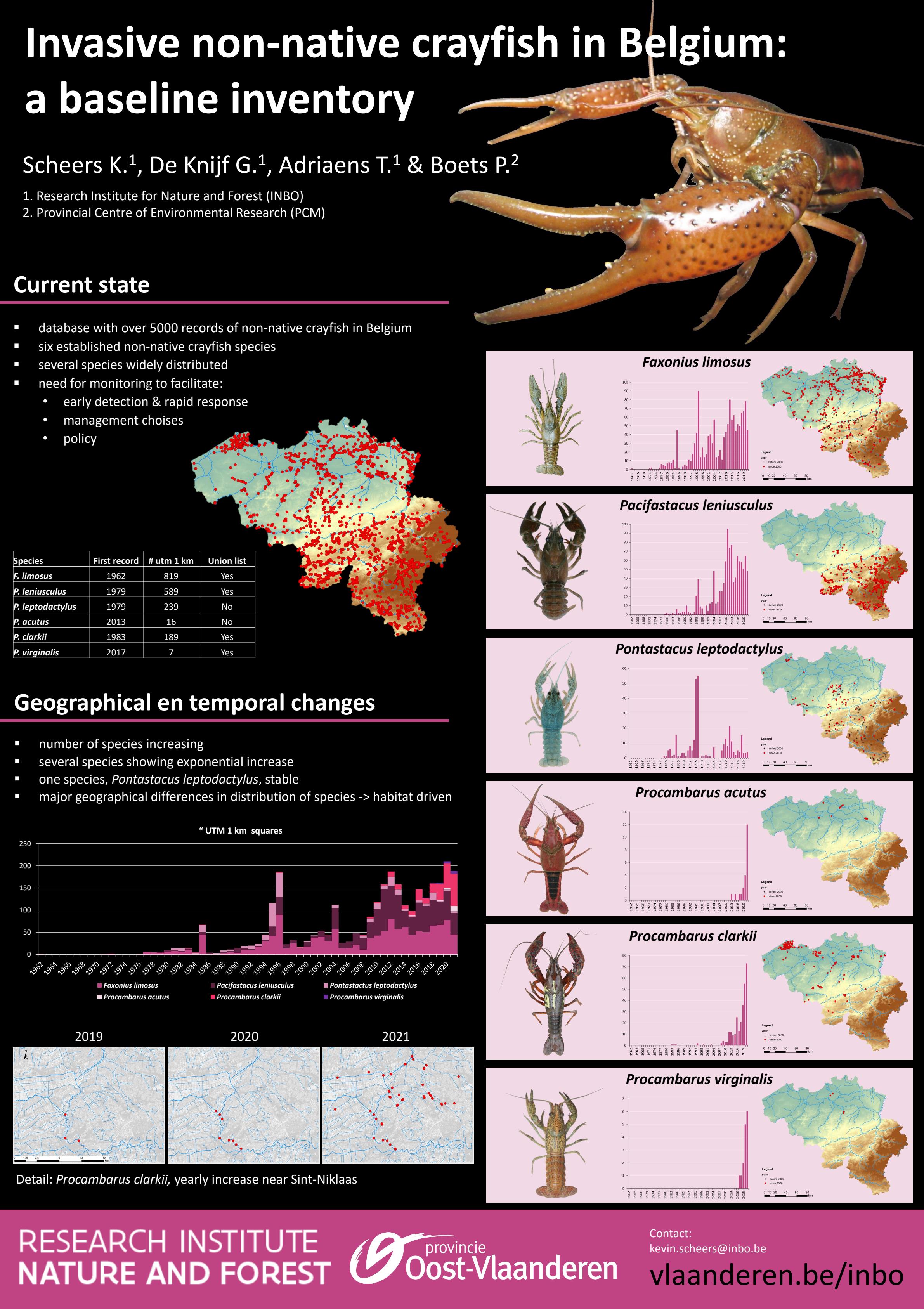Invasive non-native crayfish in Belgium, a baseline
known to date, locally depleting resources in aquatic environments and changing the fauna and flora of ponds and rivers. Despite alarming reports
from other European countries, their occurrence and impact on aquatic ecosystems and biodiversity in Belgium remains poorly understood. Recently
the presence of several new non-native crayfish came to light and the number of records and distribution of known species is increasing. To monitor
their presence and distribution a dedicated surveillance network needs to be set up, allowing early detection of new species or new populations in
uninvaded areas and facilitating management actions by authorities. We present an overview of the non-native crayfish and their distribution in
Belgium based on available data. We discuss first records, trends and status of the different species. These baseline data are essential to inform risk
assessment and for defining risk management options.
Details
| Aantal pagina's | 1 |
|---|---|
| Type | Poster |
| Categorie | Onderzoek |
| Taal | Engels |
Bibtex
@misc{55963dee-721c-46a0-afd4-f955d3ff3868,
title = "Invasive non-native crayfish in Belgium, a baseline",
abstract = "The negative impact of invasive alien species (IAS) is especially severe in aquatic ecosystems and crayfish are one of the most destructive invasions
known to date, locally depleting resources in aquatic environments and changing the fauna and flora of ponds and rivers. Despite alarming reports
from other European countries, their occurrence and impact on aquatic ecosystems and biodiversity in Belgium remains poorly understood. Recently
the presence of several new non-native crayfish came to light and the number of records and distribution of known species is increasing. To monitor
their presence and distribution a dedicated surveillance network needs to be set up, allowing early detection of new species or new populations in
uninvaded areas and facilitating management actions by authorities. We present an overview of the non-native crayfish and their distribution in
Belgium based on available data. We discuss first records, trends and status of the different species. These baseline data are essential to inform risk
assessment and for defining risk management options.",
author = "Kevin Scheers and Geert De Knijf and Tim Adriaens and Pieter Boets",
year = "2022",
month = apr,
day = "19",
doi = "",
language = "Nederlands",
publisher = "Instituut voor Natuur- en Bosonderzoek",
address = "België,
type = "Other"
}

